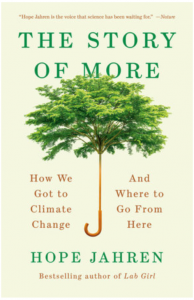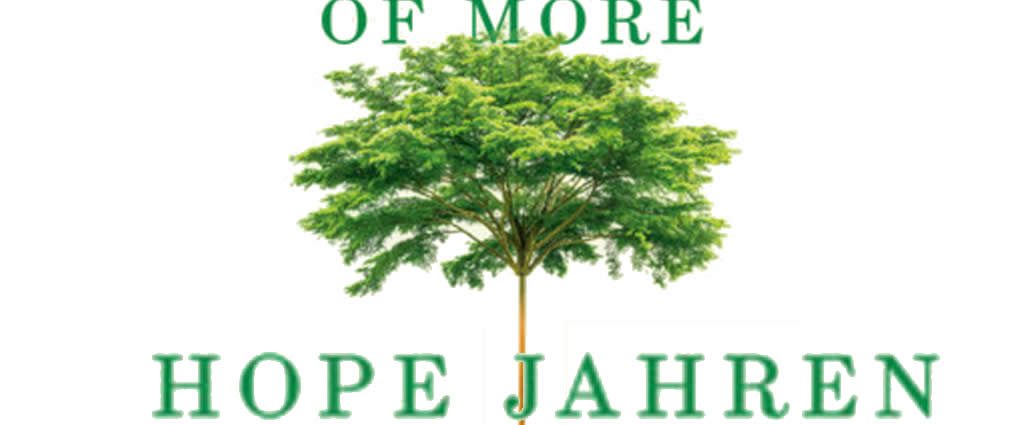
When Hope Jahren, an award-winning geochemist, was asked to prepare course materials to teach a class on climate change, her reaction was less than enthusiastic. Chagrined and taken off center, Hope’s feelings towards the subject adhere very closely to those of myself and my colleagues when tasked at looking into the global climate crisis. Each conversation about sustainable living has, in the corner, an elephant made of carbon and crude oil: reeking and pleading to be brought into the conversation. Talking about climate change is often upsetting and viscerally uncomfortable, partly because scientific dissection of the topic for any reasonable amount of time inevitably implicates one’s own behavior as a part of the problem. Shame blooms when behaviors that we exhibit are described as ruinous to our climate future; the horror inherent in self-recognition. However, in order for substantive change to happen we must find a way to move beyond this stage. Hope Jahren’s The Story of More: How We Got To Climate Change and Where We Go From Here (2020) is a wonderful first step for anybody who might find it difficult to face where we are and the lengths we must go to in order to redirect our communal course.
Progressing in a way that’s both crushing and compelling, Jahren uses her calm, careful prose to guide the reader through sheaves of biological and climatological research that, in a perfect world, would be required reading. Coming off of the success of her memoir Lab Girl (2016), Jahren offers a look at this crisis that is both personal and profound. Sections of the book range from food production to fuel consumption, deforestation and air quality – no chapter can afford to be skimmed. Using selections from giants of the literary canon such as Ibsen and Aeschylus to supplement her chapters, these allusions serve a clever dual purpose. When beginning a discussion of overpopulation with a poet of Babylon, Jahren imparts to the reader that these problems are not only inherited but inherent to the human condition. This is not to say that the book is without potential solutions to the problems we face, far from it. Hope is not without her namesake but makes it clear that the issues present themselves not just in our systems but our selfishness. Our habits can bar us from noticing that selfishness is harming our planet more than any one other force. This is not necessarily referring to an individual’s selfishness, like taking your own car to Thanksgiving because you don’t want to hear your Dad talk about his office woes. Jahren is referring to a collective discomfort with sharing, noting that, in an industrial age, it is not economically advantageous to share as something new will always be produced. This is a key component of the central thesis behind The Story of More: in order to survive the climate crisis, we need new ways of conceptualizing how we distribute our resources. WWhat The Story of More teaches us is more than just economic reorganization, as Jahren encourages a change in the way we internalize resource consumption into our daily habits and sense of self-worth.
For a sobering yet enjoyable dissection of the condition of our planet pick up The Story of More wherever books are sold.
_ Jacob Rosen

